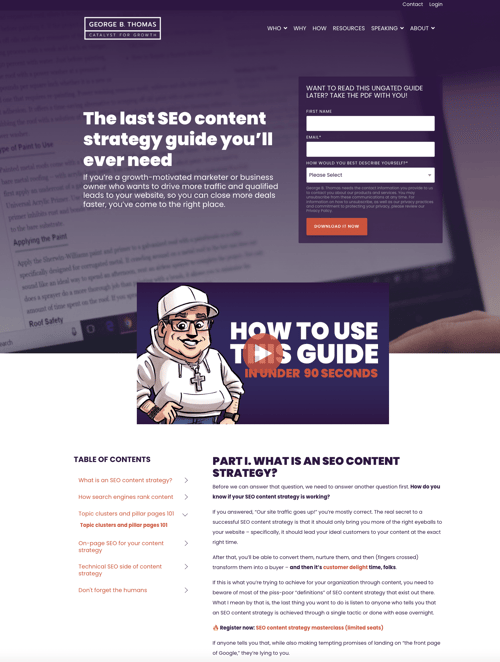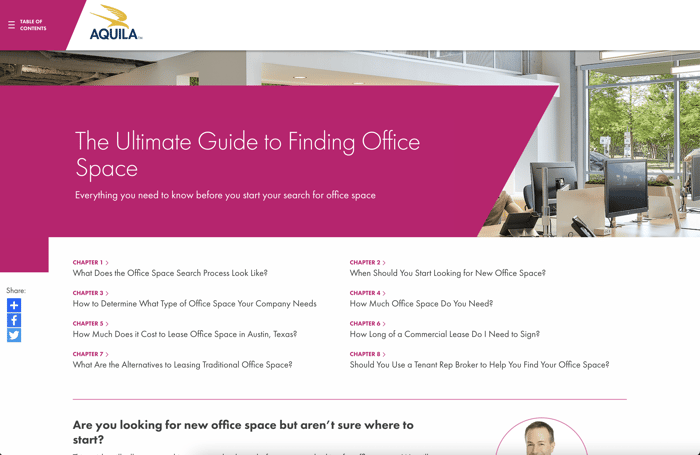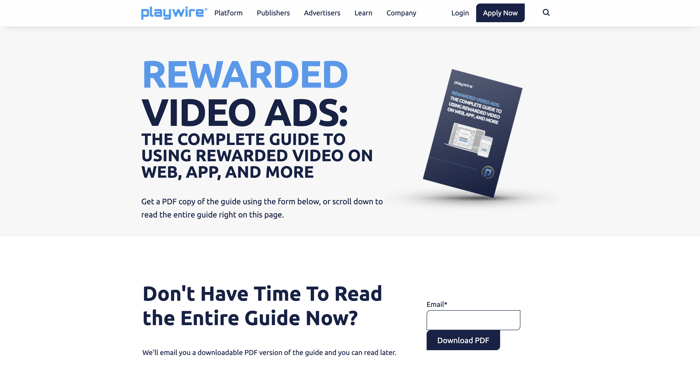In the SEO content strategy world, there is nothing more woefully misunderstood than pillar content. What the heck is pillar content? Is it a really long blog article? Should it be gated? Does it really need to be 10,000+ words long? Did some giant, evil content marketing wizard create it just to make our lives miserable? How do we guarantee if we put in all the effort to publish a content pillar that it'll actually get results?
If your head is spinning with questions like these, you've come to the right place.
Yes, your content pillar should be a definitive guide on a broad (yet well-focused!) topic, and it will take more than a little mental elbow grease to put together. But if you're a business leader or a marketer who is struggling to wrap your brain around the pillar content concept, this is your cue to grab a notepad and listen up.
🔎 Related: The last SEO content strategy guide you'll ever need
By the end of this article, you'll understand:
- What pillar content is and why it exists
- The three things every pillar page you create must do
- The most common myths and mistakes folks make with pillar content
I'll also share a few of my favorite world-class content pillar examples along the way. Are you ready? Let's go!
Why pillar content is necessary today
Back in the "good ol' days" of inbound marketing, you could put together a solid content strategy by building out a massive spreadsheet of keywords you wanted to rank for. From those keywords, you'd devise blog topics, and off you went to the races!
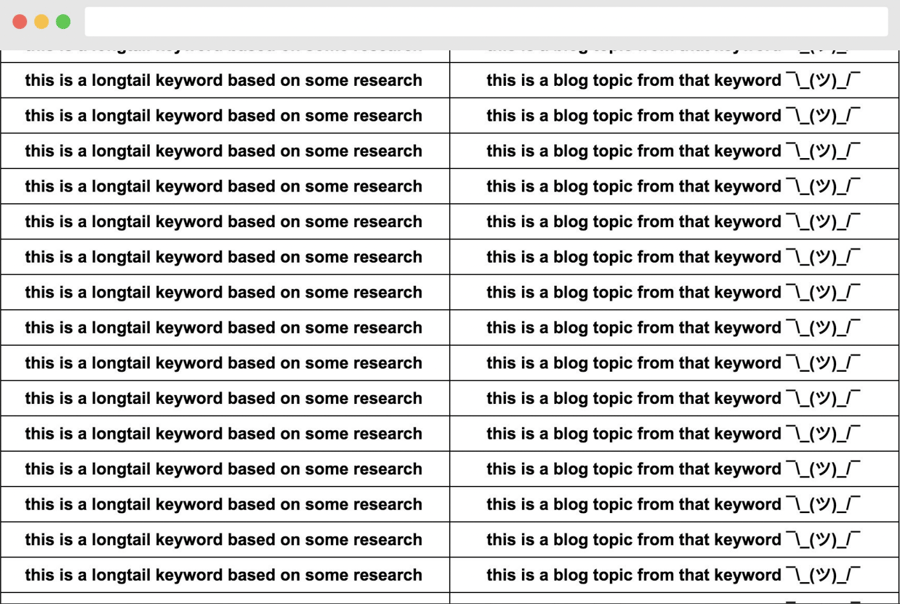
Yikes.
The challenge, of course, was that this approach made it hard to be purposeful about the content you chose to create and why. Sure, some of it related to each other but, back then, we were in the business of throwing content spaghetti against the wall to see what stuck.
And that type of content strategy doesn't sound very "strategic" to me.
On top of that, Google and other search engines have made significant changes to how they crawl and rank content online over the past decade. Their goal? To improve their ability to serve up only the most relevant and genuinely helpful content to their customers (searchers with questions!), without allowing nefarious publishers to game the system successfully.
Google, as an example, updated their algorithm years ago to punish publishers who practiced "keyword stuffing." In recent years, they also updated their algorithm to leverage AI and machine learning to make its crawling and ranking processes more efficient and effective.
And this is where topic clusters and pillar content come into play, as this model of content strategy architecture is a direct response to these updates.
How the topic cluster model works
Pillar content does not exist in a vacuum. In fact, a pillar page is the center of a network of related, linked content called a topic cluster:
Long story short, the entire topic cluster model is designed to make it much, much easier for search engines to understand what topics you want to own as an authority.
🔎 Related: What is a topic cluster? (definition + examples)
For example, if you are the world's finest purveyor of hoodies for men, (a) we should talk, as your pal, George, loves a stylin' hoodie, and (b) you'd want to build out a topic cluster that looks something like this:
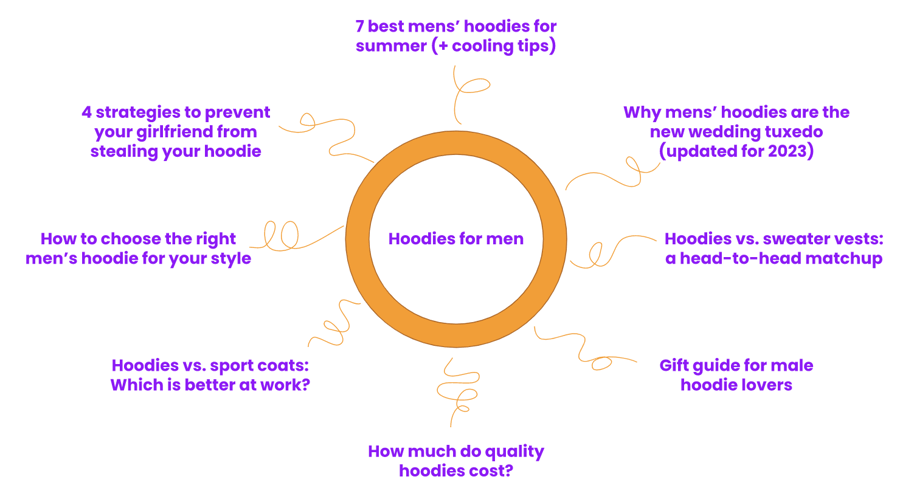
...and at the center of this glorious topic cluster is your content pillar dedicated solely to the topic of HOODIES FOR MEN.
Because, ladies and gentlemen, that is what your content pillar is. It is the last guide anyone will ever need on the broad topic you want to own to drive traffic, leads, and sales for your business. It is also the beating heart of your topic cluster, generating all of the centralized SEO content strategy power you need to harness for your website.
What is pillar content?
Now that you understand the high-level theory around what role pillar content plays in your SEO content strategy (along with topic clusters), let's dig into what pillar content looks like and why.
🔎 Related: What is great content really? (HubHeroes Podcast)
In practice, a pillar page is the definitive guide on the big broad topic you’ve built your topic cluster around. Looking at our hoodies for men example above, your pillar page would be definitive guide to everything your ideal customers need to know about hoodies for men.
Pillar content examples
Or, if you want a more practical, real-world example, this SEO content strategy guide from yours truly is a content pillar page:
Here's another great example:
The Ultimate Guide to Finding Office Space
Aquila Commercial
I love this pillar page from Aquila Commercial, for a number of reasons. First, it's so very clearly built for humans with an intuitive interface (e.g., table of contents, layout), audience-focused narrative structure, and direct navigation.
On top of that, even though it covers a super broad topic ("finding office space"), it does so by addressing a specific problem for a well-defined audience. Then, using that human-focused scope, they've framed the entire table of contents through the lens of the most commonly asked questions about the topic from that persona.
Aaaaand here's another one from a completely different industry:
Rewarded Video Ads: the Complete Guide
Playwire
If you want a masterclass in how businesses in complex industries can establish thought leadership in a powerful way through a content pillar page, look no further than this beautiful and simply executed example from Playwire.
The first thing I want to point out is how they addressed the dense topic rewarded video ads in a clear and well-structured way. They even supplemented their minimalist design with smart illustrations and graphics to make it easier for their readers to consume what they're learning.
Second, they did a great job of putting the humans they're trying to server first with pure selfless education on display. Yes, it's a lead generator, but it's obvious they prioritized the needs of their audience when developing the strategy for this piece.
🔎 Related: How to measure content marketing ROI (HubHeroes Podcast)
3 characteristics of great pillar content
I don't care what industry you're in, what platform you use for your website, or how robust (or minimalist) your approach to design will be with your pillar. Pillar content that is a powerful growth engine for traffic, leads, and sales checks all three of these boxes:
- The substance of your pillar page should be so dang good and comprehensive, it becomes the last search result your ideal customers will ever need on this topic. They should be saying, “Oh my gosh, finally! This is exactly what I’ve been looking for! I have achieved content nirvana!
- The storytelling on your pillar page is compelling, intuitive, and engaging – in short, it’s human. Because it doesn’t matter how much detail you put on your pillar page; if you don’t communicate information like a human through story and smart narrative structure, you’ll lose your audience.
- The visual structure and design of your pillar page doesn’t suck. I love pillar pages that keep me visually engaged and stimulated as I move through it. I’m not saying you have to suddenly go all out with design, but be purposeful in how you treat your headers and subheaders. Use images and graphics (only when relevant), bulleted lists, and more.
Also, as you can see with each of the examples I shared above, I still provide a lead conversion opportunity even though it's ungated. Now, you might be asking yourself, "George, if you give all the goods away for free on the page, do people even convert?"
Yes, they absolutely do. In fact, if you do your job well by creating a content pillar that selflessly addresses the needs of the humans you serve, you'll likely see your content pillars delivering conversion rates on par with any of the gated content offers you have in your library. Really.
That's what makes this whole approach to content so powerful. It's a win-win for everyone! Yes, you have to put in the work to create an in-depth guide that is sincerely helpful for your audience, even if they never work with you. But you'll be rewarded with an overall lift in your organic traffic, an elevated profile as an expert in your field (because you're sharing more of what you know), and more qualified lead traffic.
Most common pillar page mistakes
There's nothing worse than pouring your heart and soul into building out a topic cluster — pillar page, subtopics, and all — only to have it completely flatline the moment you smash the "publish!" button.
To help you avoid such a fate, here are the most common mistakes you need to avoid when developing pillar pages for your business:
- I've already alluded to this once, but I'll say it again — yes, you can offer an ability to download the PDF, but you cannot fully gate the content pillar. A pillar page is a search play, so if you gate it, the search engines won't be able to find it.
- Your linking strategy can make or break your topic cluster. What I mean by that is, if you only have your pillar linking out to related blog topics OR you only have the related blog articles/subtopics linking back to the pillar — but not both! — your topic cluster won't work. All subtopics and related blogs need to link to the pillar, and the pillar must link back out to each of those subtopics in your topic cluster.
- Yes, your pillar should be longer than a blog post, but don't write War and Peace if you don't need to. One of the most common questions I get about content pillars is, "So, do they really need to be more than 10,000 words?" No, they don't. Word count maximums and minimums are entirely arbitrary, and that’s especially true in the pillar page world. My advice? Write until you're done. If you don't cut corners, and you're thorough in your education on the topic, the word count will take care of itself.
- Your pillar page does not need to be like a Wikipedia entry. Wikipedia pages are designed to be the “kitchen sink” of a topic, with every tiny detail about a specific topic covered from every conceivable angle. Pillar pages, even though they are broad in scope, should be designed to solve a specific problem for a specific audience (or audience groups) in mind.
"How do I solve for the human first?"
When it comes to pillar content, this is the question you should always be asking yourself.
Trust me, I love SEO content strategies to drive traffic as much as the next growth-focused business owner. That being said, you must check yourself at every opportunity to guarantee you are always building every piece of content you create (pillar page or otherwise) to serve the people you're trying to reach first ... and our robot overlords, like Google, should always come second.
For example, when you're scoping out your pillar page content strategy to be tightly focused, ask yourself questions like:
- Who is searching for this topic?
- Why are they searching for this right now, at this moment?
- What questions are they trying to answer?
- What are the most common follow-up questions and objections we get when we talk about this topic with our ideal buyers?
- Are there specific goals or challenges in front of them right now?
- If we know who they are and what they're looking for, what do we need to cover for them to feel satisfied by the end of this guide?
When you answer these questions, it makes it easy to understand exactly what you should (and shouldn't) cover on your pillar page ... and you're making those choices based on the needs of your buyers, not what you think Google will want from you.
⚠️ Register now: SEO content strategy masterclass
If you lead with a robots-first mindset in your content, you may experience a short windfall of increased traffic when you first take a pillar page live. But don't get too excited; those gains will vanish as quickly as they appeared.
Why? Your ideal customers are much less tolerant of content that's clearly designed to meet your goals, rather than to help them achieve theirs. So, it won't take them long to click away from you to a different search result — perhaps a competitor who realized the best business decision they could make was to put the needs of their buyers (and yours) first.


 George B. Thomas
George B. Thomas
